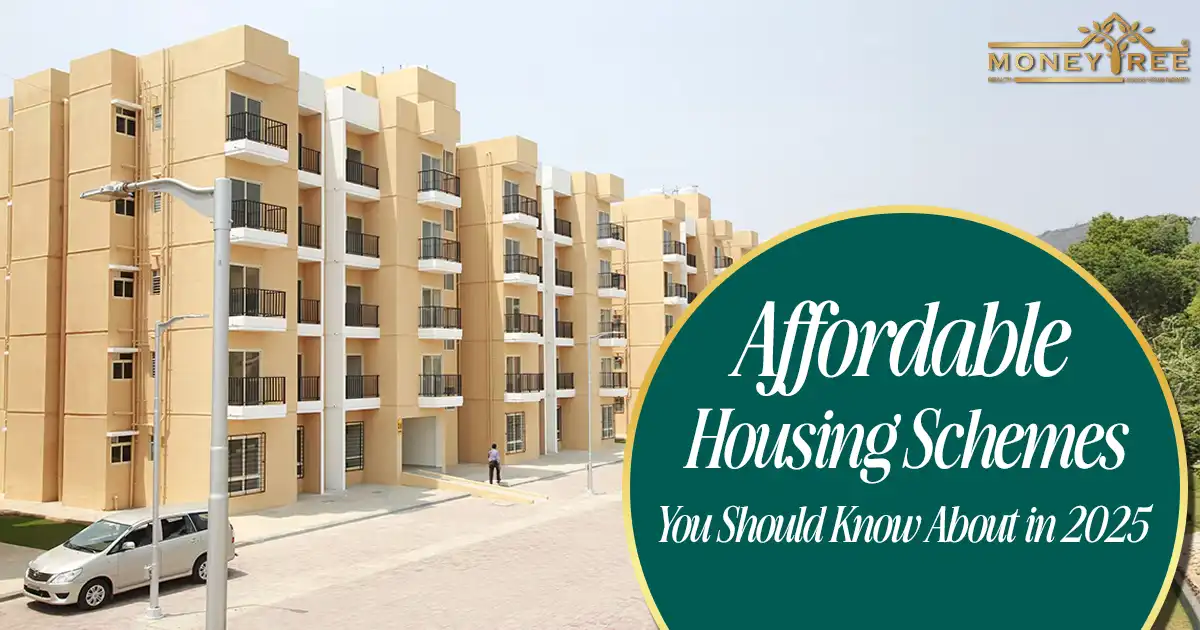
Pataudi Palace: Saif Ali Khan’s Home; Exploring the Royal Heritage and Luxury Worth Over 800 Crore
Saif Ali Khan's Pataudi Palace: A Glimpse Into Royal Heritage
Saif Ali Khan’s Pataudi Palace is not just a royal lineage of one of India’s most illustrious families but a rich heritage, standing beyond time, still carrying the legacy of Mansoor Ali Khan Pataudi and his father Iftikhar Ali Khan. Also known by the name of Ibrahim Kothi, Pataudi palace connects Saif Ali Khan, the current owner close to his roots, to the legacy in the form of a historical monument. It is not just a residence but a preserved history, national pride passed down the Pataudi family’s lineage.
Pataudi Palace: The History and Legacy of the Royal House
Built in the early 1900s, Pataudi House was commissioned by Saif’s grandfather, Nawab Iftikhar Ali Khan, one of the most renowned cricket captains of British India. The palace has a colonial architecture with Indian aesthetics influence which attracts visitors all over the world. The palace offers the view of Indian history with the fashionable interiors and the pictures of the Pataudi line. When we find ourselves strolling through the hallways of the palace beneath the roof of history, one cannot help but be nostalgic. There is history of the Pataudi lineage etched at every corner of the palace, which can tell about the lifestyle of the Khan’s.
The Pataudi Legacy: Mansoor Ali Khan and Saif Ali Khan’s Heritage
The story of the Pataudi Palace would be incomplete without honoring the legacy of Saif’s father, Mansoor Ali Khan Pataudi, who was fondly known as “Tiger Pataudi.” Mansoor Ali khan is a cricketing legend, the youngest Indian to lead the national team, an inspiration for the youth.
Mansoor Ali khan was regarded as the ‘Nawab’ by the locals. Pataudi palace was a local cultural pillar with Mansoor Ali ensuring the well-being of his local community. To Saif, it's not just a home but a symbol of his family's contribution to the community, representing his fathers legacy.
This connection to Pataudi is also evident in Saif’s personal life. Although he spends much of his time in Mumbai and his house in Bandra with his wife, Kareena Kapoor Khan, Saif makes frequent visits to Pataudi. He has expressed how meaningful it is for his children, Taimur and Jeh, to have a connection with the palace, ensuring that the heritage of the Pataudi family lives on through future generations.
The Historic Significance of Pataudi Palace and Saif Ali Khan’s Connection
The palace is a structure which tells the story of pre and post British India in a single estate. Saif Ali Khan also gained much media attention when he was reported to have bought the palace again even though it was earlier said that the palace had been let out by the family. Saif described in interviews that he intended on having the palace given back to the family because he believed ownership of such a piece was as valuable as the heritage.
Pataudi Palace as a Tourist Destination: Can You Visit Saif Ali Khan’s Ancestral Home?
For Saif Ali Khan, Pataudi Palace holds a special place, as home and also as its guardian. Despite residing in Mumbai Saif cherishes Pataudi Palace as his peaceful outing and a road down the memory lane.
One of the most frequently asked questions by fans and history buffs is whether Pataudi Palace is accessible to the public. Regrettably, at present, Pataudi Palace still belongs to the family and is closed most of the time to viewing. Its fame attracts the tourists to visit and experience the timeless beauty of the palace. However, Saif, along with his family members, decided to keep it as the family residence.
But, for some time, parts of the palace were rented out to Neemrana Hotels and opened to tourists as a heritage hotel. As a result, people could reserve rooms in the palace, which let them explore the building’s grand interiors and stunning setting.
A Royal Retreat: Pataudi Palace as a Film Shooting Destination
For filmmakers, Pataudi Palace's picturesque setting serves perfectly , adding depth and character to cinematic stories The palace boasts:
- Palace’s authentic royal aesthetic
- Royal settings with a true sense of grandeur
- Fusion of European and Mughal architectural styles
- Visually captivating space
- Palace’s timeless beauty
- Peaceful location to shoot complex scenes without interruption
Over the years, Pataudi Palace has served as a famous filmmaking destination with attractive old-world aesthetics and historic pre-independent vibe. Here are some notable films that have scenes from the palace:
-
Veer-Zaara (2004)
Directed by Yash Chopra, used Pataudi Palace to depict the grandeur of Veer’s (Shah Rukh Khan) ancestral home. The palace’s royal ambiance perfectly complemented the film’s romantic storyline, with scenes that beautifully showcased the palace’s architecture and lush gardens.
-
Rang De Basanti (2006)
Directed by Rakeysh Omprakash Mehra, some of its scenes were shot in Pataudi Palace. The scenery and scenes of the movie makes it well known and its central themes of patriotism and rebellion are perfect backdrops when depicting historical resonance.
-
Mangal Pandey: The Rising (2005)
This historical drama starring Aamir Khan explored the story of Mangal Pandey, an important figure in India’s First War of Independence. Pataudi Palace’s authentic setting added a layer of historical realism to the film.
-
Eat Pray Love (2010)
Briefly featured in ‘Eat Pray Love’ starring Julia Roberts, this international project further emphasized the palace’s reputation as an ideal location for film shoots, attracting attention from filmmakers around the world.
Saif Ali Khan’s Global Homes: Bhopal, London, Gstaad and Beyond
Not only does Saif Ali Khan boast a great amount of cultural capital, but he also has a great list of addresses that to a great extent reflect his Anglo-Indian genes and jet-setting existence. From the transfixed building of the lavish palace in Bhopal to comfy house in Switzerland to elegant house in Mumbai – every property has its own flavor that reflects not only Saif but his different experiences as well.
Saif Ali Khan’s House in Bhopal: A Royal Abode in the City of Lakes
The city of lakes, Bhopal holds a special place in Saif Ali Khan’s heart. It is not only the home of his royal ancestors but also has a deep cultural and personal significance. His property in Bhopal stands as a symbol of his family’s legacy in the city of lakes.
Royal Bhopal House is not merely a house but a gateway to history. Saif inherited this property from his father, Mansoor Ali Khan Pataudi, a renowned cricketer and a respected figure in Bhopal, which makes this residence even more precious.
The Bhopal house of Saif is beautifully designed in both, Islamic and Indian architectural styles. It has huge gateways, Jali work and vast courtyards. Interiors show Nawabi culture of Bhopal and the historic royal memorabilia, furniture and many such antique architecture.
They bought the house many years ago and Saif often stays there to recall his royal ancestry and the comfy house connects him with modern life.
Saif Ali Khan’s House in Switzerland: A Cozy Getaway in Gstaad
Switzerland is a dream location for many stars; Saif and Kareena like it particularly for family holidays far from the lights and paparazzi glare.This house is built in the traditional style of chalet as the main type of construction in Switzerland is warm and friendly. The chalet has timberwork trims which makes it homely with comfortable seating and fire places especially suitable during the winter.
For Saif and Kareena, the Gstaad chalet is more than just a vacation home; it’s a place to bond with their children, Taimur and Jeh. They often spend quality time skiing, exploring the beautiful landscapes, and creating cherished memories.
Saif Ali Khan’s House in Mumbai : A Stylish Residence
Bandra, a popular neighborhood among Bollywood stars, is where Saif and Kareena’s stylish home is located. The interiors of Saif and Kareena’s Mumbai home reflect a fine blend of timeless design and classic elements. The color palette is predominantly neutral, creating an ambiance of sophistication and calmness throughout the home.The Mumbai residence is designed with family life in mind, featuring comfortable and functional spaces for Saif, Kareena, and their children.
Pataudi Palace Interiors: A Royal Tour Inside Saif Ali Khan’s House
Pataudi Palace is more than just an architectural marvel; it’s a symbol of India’s royal history and heritage. Built by Saif Ali Khan's grandfather, Nawab Iftikhar Ali Khan, the palace features colonial and Mughal architectural influences with elegant gardens, spacious courtyards, and grandiose halls. Here’s a closer look at the interiors of Pataudi Palace, offering a glimpse into its royal charm and sophistication.
The Grand Entrance: A Regal Welcome to Pataudi Palace
The first impression that visitors get of Pataudi Palace is the entrance: a magnificent arch that proclaims the grandeur within. The front door opens up to a royal premise, an impression that uplifts the rest of the experience of the palace. Sculpted columns, elaborated arches and an inviting open-to-sky intermediate courtyard give a warm welcome, highlighting the Nawabi days of India.
Architecture with a Historical Touch
Praising the structure of Pataudi Palace as a magnificent mansion, it is necessary to note that the general layout and design of the palace are the typical example of Indo-European architecture widely used at Indian palaces of the 19th Century. On arrival into the compound, one is fascinated with the high ceilings crowned with arches, then the green lawns with interconnecting meandering paths leading into different parts of the palace. There is a good combination of white marble and sandstone on the exterior that gives it a spiritual outlook over the green surroundings.
Courtyard and Garden Pathways
This is a typical layout of any Mughal architecture where the front door opens directly to a large open square courtyard. The beautiful chandeliers and lush green lawns signify the entire palace’s style; a blend of nature and luxury. The paths leading from the main gate bring the guests to the palace and yard where walks and flowerbeds are neat and well-maintained, and where other items of historical interest are presented to the public. Saif Ali Khan and his family always mention that this sort of entry gives the feeling of coming home among generations of the Pataudi royalty.
Art and Decor: Traditional Indian Artistry and Antique Collectibles
Everything inside the large gates of Pataudi Palace welcomes one to a redefined era of luxury that more or less enriches the architectural work in terms of art and interior designing. Every corner and room of Pataudi Palace boast of Indian artifacts, fabrics and Antique furnishing that speaks volume of the Pataudi dynasty.
Walls that Speak: Indian Art and Embellishments
The paintings on the walls of Pataudi Palace are Indian style paintings such as Mughal painting which illustrate myths, royal pomp and pride, and the beauty of Indian native scenery. The painting portrays richness in India culture and the artistic period of Mughal influences in the painting. Tapestries hang on the walls and wall hangings are products of workmanship inherited from previous generations that are not only colorful but also meaningful.
Furniture and interior design have been around for centuries with artwork occupying a large part of human history.Pataudi Palace has an array of furniture collections of antique nature that depicts the royal lifestyle of the past years. The chairs are wooden with large carvings while tables and sofas are of velvet, each selected in accordance to their age and appearance. Authentic Persian rugs lend a traditional feel as well as cosines and the traditional chandeliers provide adequate light to the rooms. The entire decor style is reminiscent of glitz and moderation at the same time thus leaving a feel of exclusivity and enclosure.
Old fashion portraits and family photos
Saif maintains many black and white photographs on the walls of the palaces including pictures of his ancestors. These images are fond memories of Saif’s early childhood and of his father, the late Mansoor Ali Khan Pataudi, and his grandfather Iftikhar Ali Khan.This keeps the palace slightly more homely than the superfluous traditional art works make it; a personal art of the Pataudi’s reflects the purpose of Pataudi Palace – a home multiplied by several generations.
Royal Artifacts: An Exhibition of Priceless Pataudi Heirlooms
After familiarizing with the historical background of Pataudi Palace, one must gaze at the history by looking at the treasures that Pataudi’s hold dear. Each one is a memory of the family’s glorious days and Saif Ali Khan carefully takes care of all of them. These royal artifacts are not mere physical possessions, but are memorials and icons of the family of Pataudi’s.
A Gallery of Fine Art and Rare Furnishing
This palace has a treasure house of antique collections of the Pataudi lineage other than a vast gallery of rare paintings. These include sharply carved swords, shields and other weapons that once belonged to Saif’s family, a symbol of each episode of royal legacy. The display cabinets also preserve precious jewels, medals and ornaments which were previously owned by the Pataudi family and which were used by the family during the royal and official ceremonies. This is a collection of a completely different era which reveals much about the lifestyle and culture of the Nawabs of Pataudi.
The Library: A Major Repository of Literary Resources
Probably one of the most quickly noted aspects of the building is the library; books, manuscripts and letters belong to the family. Here is Saif’s private haven, where he is able to shake hands with heritage through literature. It consists of works of various categories and topics which give a clue about the reading preferences of the Pataudi lineage. There are also the copies of first books and manuscripts being stored there that are appreciated as family’s relics.
How Much Is Saif Ali Khan's House in Pataudi Worth?
The exact value of Pataudi Palace is difficult to pinpoint due to its historical nature, as it is not only a luxurious residence but also a heritage property. However, some estimates have placed its value between INR 800 crore to INR 1,000 crore (approximately $100 million to $130 million USD).
Frequently Asked Questions
Where is the Pataudi Palace located?
It is located in the town of Pataudi in Haryana, India.
Who designed the Pataudi Palace?
It was designed by architect Robert Tor Russell in collaboration with Austrian architect Karl Molt von Heinz.
Is Pataudi Palace open to the public?
No, it is primarily a private residence, though parts may occasionally be available for shoots.









